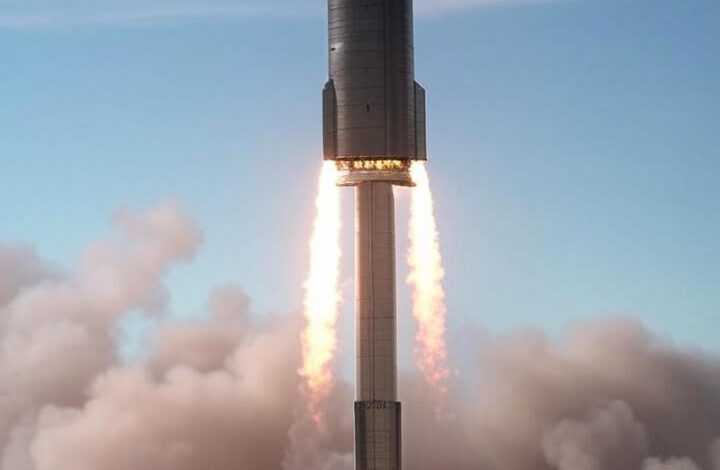SpaceX Starship Flight 10 Soars Despite Hardware Flaws

UPDATE: SpaceX’s latest test flight of its Starship rocket achieved significant milestones on August 26, 2025, despite grappling with several hardware flaws. Launching from the company’s Starbase facility in Texas, this tenth flight marked a decisive shift in SpaceX’s approach to spacecraft development, focusing on resilience over perfection.
The test flight comes on the heels of a series of explosive failures, reflecting SpaceX’s commitment to pushing boundaries. According to reports from TechCrunch, the mission prioritized collecting real-world data rather than avoiding risks—an approach that could drastically accelerate the timeline for operational reliability in interplanetary travel.
Despite facing challenges, the mission saw the Super Heavy booster successfully separate and perform a controlled splashdown in the Gulf of Mexico. The Starship upper stage achieved orbital velocity, completing a partial orbit before landing in the Indian Ocean. Notably, this flight included the first successful deployment of a mock payload using a “Pez dispenser” mechanism, simulating future Starlink satellite releases, as highlighted in coverage from TeslaNorth.com.
This success follows a turbulent period for SpaceX, with the previous three flights culminating in explosions or uncontrolled disintegrations. Industry experts assert that Flight 10 demonstrates a deliberate pivot towards iterative resilience, with Elon Musk, SpaceX’s CEO, confirming on X (formerly Twitter) that the vehicle overcame leaks and pressure issues yet still completed critical mission phases, yielding valuable data for future improvements.
The National Space Society celebrated the flight’s achievements in a press release, emphasizing its importance for advancing the Starship program. By flying hardware that wasn’t perfectly tuned, SpaceX gathered telemetry on real failures, potentially informing design enhancements, including improved fire suppression systems and better tile adherence.
Diving into the technical aspects, Flight 10 tested upgraded forward flaps and higher-thrust engines, building on lessons learned from prior attempts. Coverage from Space.com characterized the launch as a “stunning comeback,” with video footage capturing the rocket’s ascent, despite visible tile shedding during re-entry. This tolerance for imperfection is crucial for a vehicle designed to transport thousands of pounds to Mars.
However, challenges persisted, including oxygen and fuel leaks that led to a loss of main tank pressure, echoing issues from Flight 9. Nevertheless, the mission’s partial success—hovering briefly before a planned ocean descent—validated SpaceX’s “fail forward” philosophy. Reports from The New York Times noted that this flight overcame numerous delays, rescheduling from August 24 to 26 due to technical setbacks.
For industry insiders, Flight 10 signals a maturation in SpaceX’s development strategy, potentially shortening the timeline to crewed missions. The ability to deploy payloads mid-flight opens up possibilities for integrating Starship with NASA’s Artemis program and other commercial ventures. Speculations about future steps include the implementation of catcher tower landings for boosters, which could revolutionize reusability economics.
Despite some critiques suggesting that prioritizing resilience might compromise safety, the data gathered from this flight is expected to influence various iterations, including enhancements to Grok 5 AI and Tesla’s Autopilot updates, as hinted by Musk on X.
Looking to the future, SpaceX aims to increase its launch cadence, with Musk indicating that data from Flight 10 will inform refinements to heat shields and propulsion systems. Publications like CNN captured the live drama of the launch, marking a significant shift from past “explosive mishaps” to controlled outcomes.
Ultimately, Flight 10 exemplifies SpaceX’s bold strategy of iterative testing, transforming potential disasters into stepping stones for progress. As the company integrates these lessons into its operational designs, the space sector watches closely, eager to see how this approach will reshape rocket development and influence global exploration ambitions.






